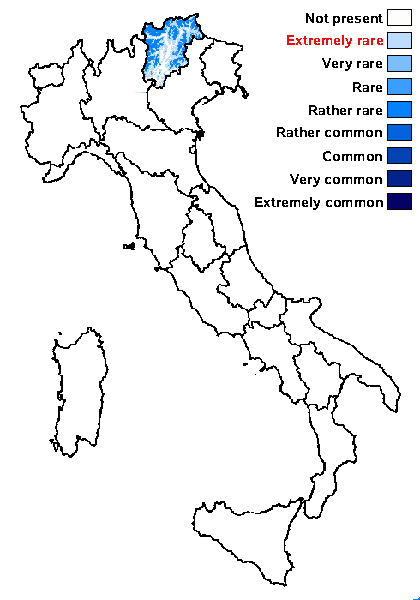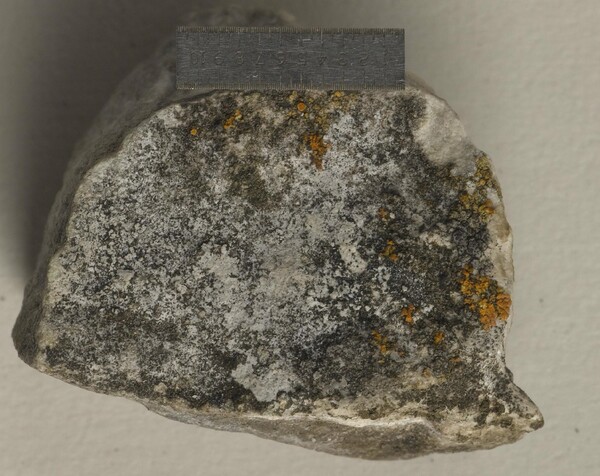Verrucula protearia (Zehetl.) Nav.-Ros. & Cl. Roux
in Navarro-Rosinés & al., Bull. Soc. linn. Provence, 58: 164, 2007. Basionym: Verrucaria protearia Zehetl. - Nova Hedwigia, 29, 3-4: 727, 1978.
Synonyms:
Distribution: N - TAA (Navarro-Rosinés & al. 2007).
Description: Thallus crustose, greyish brown to whitish grey, 0.15-0.4 mm thick, consisting of scattered or contiguous areoles developing on Leproplaca proteus. Areoles rounded, angular or irregular, (0.2-)0.3-0.6(-0.9) mm wide, smooth or rugose, slightly concave to convex, matt, slightly attenuated at the base, the margins concolorous with upper surface or slightly darker, but never black. Cortex paraplectenchymatous, of a single layer of cells with brown pigment, partially overlain by an epinecral layer; medulla 100-200 μm thick, with some crystals in lower part, I-. Perithecia 1-5(-10) per areole, entirely immersed or projecting only with the black ostiolar region. Involucrellum absent; exciple globose, 150-180 μm across, the wall paraplectenchymatous, 15-18 μm thick, colourless except around the ostiole. hamathecium of periphyses along the ostiolar channel, pseudoparaphyses in upper part of the perithecium, and paraphyses disappearing early; periphyses 15-16(-20) μm long. Asci 8-spored, clavate, bitunicate, with a thin tholus reacting I-, Verrucaria-type. Ascospores 1-celled, hyaline, ellipsoid, 15-20 x 6-8.5 μm. Photobiont chlorococcoid. Spot tests: K-, C-, KC-, P-, UV-. Chemistry: without lichen substances.Note: a lichenicolous lichen growing on the thalli of Leproplaca proteus; to be looked for in the Italian Alps (the record is from Austria, but not far from the border).
Growth form: Crustose
Substrata: rocks
Photobiont: green algae other than Trentepohlia
Reproductive strategy: mainly sexual
paras Leproplaca proteus
Commonnes-rarity: (info)
Alpine belt: rather rare
Subalpine belt: rare
Oromediterranean belt: very rare
Montane belt: extremely rare
Submediterranean belt: absent
Padanian area: absent
Humid submediterranean belt: absent
Humid mediterranean belt: absent
Dry mediterranean belt: absent

Predictive model
Growth form: Crustose
Substrata: rocks
Photobiont: green algae other than Trentepohlia
Reproductive strategy: mainly sexual
paras Leproplaca proteus
Commonnes-rarity: (info)
Alpine belt: rather rare
Subalpine belt: rare
Oromediterranean belt: very rare
Montane belt: extremely rare
Submediterranean belt: absent
Padanian area: absent
Humid submediterranean belt: absent
Humid mediterranean belt: absent
Dry mediterranean belt: absent

Predictive model
 Index Fungorum
Index Fungorum
 GBIF
GBIF


